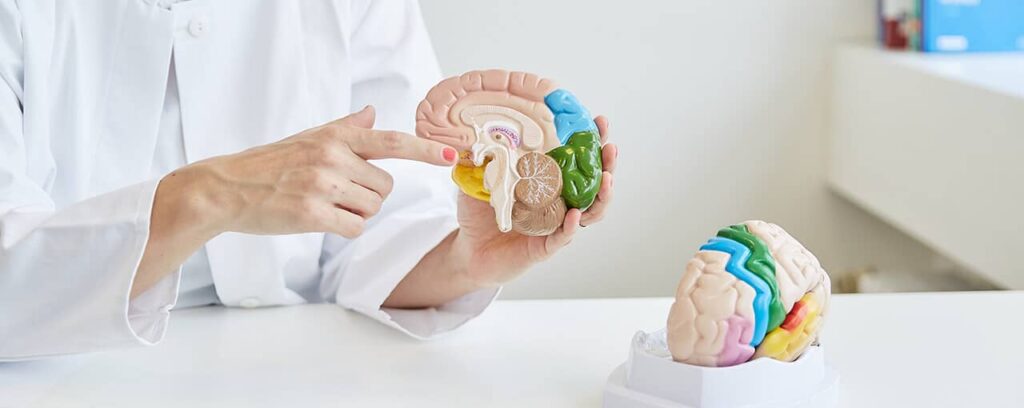Migraine and Headache
Migraine is a common disease, about 4-7% of the population suffer from migraine. Attacks can last up to 72 hours in adults and are accompanied by a mostly hemiplegic and throbbing headache, typically accompanied by nausea, vomiting, and sensitivity to light and noise. In about one in seven patients, the migraine attack is preceded by an aura; phenomena such as flashes of light, flickering, perception of jagged lines, or sensory disturbances in the extremities or face are described. Middle-aged women are affected about 3 times more often than men. Often, the symptoms change in the course of life.
How is the diagnosis made?
The diagnosis is essentially made on the basis of the description of the symptoms (history taking) and the (inconspicuous) neurological examination findings.
It is a chronic disease with recurrent attacks. A distinction is therefore made between preventive treatment (so-called migraine prophylaxis) by reducing the frequency and intensity of attacks, and treatment of the acute attack (attack treatment).
How is migraine treated?
In attack treatment, people tend to resort to pure painkillers (ASA, NSAIDs) or to specific migraine medications (so-called. Triptane), which are offered as tablet, nasal spray or injection, often in connection with means against the nausea (Antiemetika).
In the Migräne prophylaxis numerous medicines come into question, which must be taken unfortunately regularly. The selection is made according to individual aspects of tolerability and efficacy on a case-by-case basis. Recently available so-called monoclonal antibodies (eptinezumab, fremanezumab, galcanezumab or erenumab) represent a valuable supplement. They are usually injected once a month and significantly reduce the number of attacks/migraine days. Unfortunately, not all patients respond to this treatment, so efficacy must be evaluated within 4-8 weeks. Botulinum toxin injections have also become important in migraine prophylaxis today. The treatment is effective for several months and has few side effects.
The importance of behavioral medical therapy methods should not be underestimated. For example, stress management procedures, relaxation therapy and regular aerobic endurance sports are recommended.
The therapy options mentioned are of course available to you at our clinic, and we would be happy to advise you.

